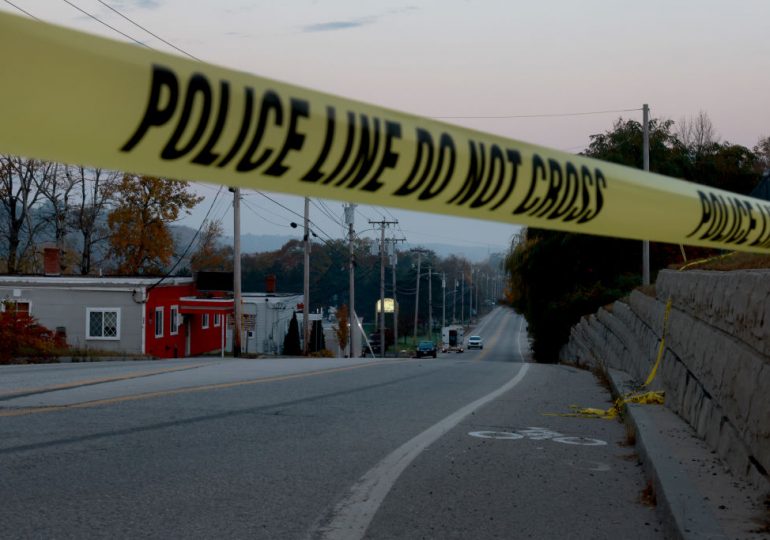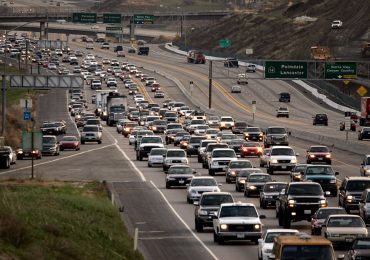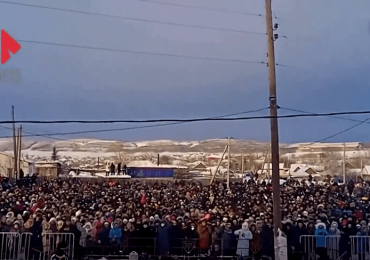It’s hard for Americans in the 21st century to think about their guns as ordinary objects. When nightmarish events like the recent mass shooting in Maine occur, we retreat to reassuring positions in the culture wars.
[time-brightcove not-tgx=”true”]
Gun “culture”is our collective, contentious effort to apply meaning to these inanimate things made of wood, plastic, and steel. For some, guns “may be the biggest force for evil in America,” as Seattle Times columnist David Horsey wrote last year of the firearms industry. For others, like the National Rifle Association, guns are in fact the best defense against malevolent supernatural forces. In the aftermath of the horrific 2012 mass slaughter of children in Newton, Connecticut, NRA executive vice-president Wayne LaPierre explained that “genuine monsters” walk among us, “people so deranged, so evil, so possessed by voices and driven by demons that no sane person can possibly ever comprehend them.” We ought to expect similar platitudes from the gun lobby in response to Maine in the days ahead.
A 2021 study by a group of sociologists found a correlation between Americans who believe in the earthly presence of demons and devils and support the expansion of gun rights. You might negotiate with metaphorical monsters, you might think the laws you pass limit their ability to harm others, but when it comes to “genuine monsters,” you must shoot to kill.
To kill fantastical creatures, you need fantastical weapons. That’s where the gun industry comes in, to provide you with the talisman you need to operate in a world in which evil people possessed by demons walk. Guns are more than just metal and plastic, more than just technology. They protect, defend, secure, preserve, and safeguard. They connect, too, linking gun owners present with an imagined past, with those who resisted tyranny with arms, or who took up arms to fight for causes noble and ignoble. You—a white man armed with an AR-15 and storming your state capitol building to protest state coronavirus restrictions, or stockpiling guns just outside Washington, D.C., on January 6, 2021—you are the minuteman who grabs his musket to answer the call to confront the Redcoats. Magical thinking about guns is one of gun capitalism’s most effective products, turning cheap crap into cherished commodities, at the cost of a society increasingly fearful and armed.
Read More: Maine Is Missing Opportunities to Stop Gun Violence, Experts Say
Magical thinking about guns is a kind of fetishism, which sees guns as totems instilled with meaning beyond their basic material parts. It’s a variant of what Karl Marx called “commodity fetishism,” which obscured the more mundane material realities of the social relations of industrial capitalism. Commodities were raw materials transformed through human labor into objects of utility. But capitalism made magic of them, in the process making invisible the labor of the exploited workers who made raw materials into consumer goods.
Gun capitalists of the 19th century first learned to sell the magic of guns to American consumers. Samuel Colt and Oliver Winchester, among others, knew that selling guns meant selling stories about guns and thus imbuing the guns with cultural meaning. “God created men equal. Colonel Colt made them equal,” went one variation of a popular tagline, while Winchester’s Model 1873 rifle was “the gun that won the West.” These early gun capitalists were storytellers as much as they were inventers and tinkerers.
The innovative gun capitalists of the postwar United States crafted a different narrative. Chief among them was Samuel Cummings, founder of Interarms, which became the world’s largest arms dealer by the 1960s. While the press occasionally linked him to international arms dealing intrigue, he made most of his money in the most mundane of ways: he sold American consumers millions of cheap guns. His biggest moneymakers in Interarms’s first two decades were war surplus firearms, hauled out of European warehouses where they had been collecting dust. Cummings cleaned them up—“sporterized” them, in the parlance of the times, anticipating the 21st century’s “modern sporting rifle” by a half-century—and shipped them to hunters and collectors and the gun-curious, mostly white men, suddenly flush with cash in the afterglow of America’s moment of global supremacy.
The story Cummings and the new postwar gun capitalists told—the magic they sold—was of a country without limits when it came to partaking of the world’s bounty of firearms. Interarms’s advertisements, packed with dozens of guns for sale, most of them war surplus imports, spoke of abundance and power: guns from vanquished foes like Germany, Japan, and Italy, and even from new rivals the Soviet Union, could be yours for as little as $10. The gun consumer was a global conqueror. Cummings joked that a cheap Carcano rifle made in wartime Italy, just like the one Lee Harvey Oswald used to kill John F. Kennedy, was a “throwaway gun,” one you could leave out in the woods after you bagged your first deer.
Oswald’s Carcano inevitably drew attention, however, as did the plague afflicting urban residents in an era of rising crime rates: cheap handguns, many of them also imports, mass-produced in fly-by-night factories in Western Europe out of scrap metal leftover from the war. When Congress began debating new restrictions on firearms in 1963, a movement of consumers rose up to oppose it—the gun rights movement. The National Rifle Association, arguably the world’s most successful consumer lobby, stepped in to help write new laws that would not so much prevent gun violence as they would protect gun consumerism. The resulting 1968 Gun Control Act was a mild set of restrictions that respected the fundamental legitimacy of the gun consumer market and sought to protect the “law-abiding citizen”—another magical totem of our gun culture—from certain categories of people (like convicted felons) who might give gun buyers a bad name.
The Gun Control Act didn’t make anyone happy. Despite prioritizing the needs of the “law-abiding citizen,” it angered gun rights activists convinced that it was the first step down a slippery slope toward totalitarianism. For the early grassroots gun control activists emerging after 1968, the law was so weak precisely because it was written to placate gunmakers and consumers. These activists urged their political leaders to look to other liberal democracies around the world, which either rejected guns as a market good altogether or regulated the gun consumer market so extensively as to make it unrecognizable to its American counterpart.
Today’s predominant understanding of the Second Amendment—the widespread popular belief that this constitutional provision protects an individual right to own a firearm independent of service in a militia—emerged in the first decades after the Second World War, when gun consumerism boomed and Cold War anxieties supercharged conservative politics. Just as consumers grew accustomed to Cummings’s seemingly limitless bounty, state and federal officials started debating how to restrict it. A burgeoning gun rights movement seized on the obscure “Article II” of the Bill of Rights (few Americans in 1968 could have told you what right it protected) to claim that any limits on gun ownership amounted to a violation of basic freedoms. Those activists saw themselves as “the well-regulated militia” (even if few of them were active members of the United States’ actual militia, the National Guard), ready and eager to defend the nation from its external and internal enemies. But as the gun rights movement increasingly became a popular gun consumer movement in the 1970s and 1980s, the right-wing cold warrior’s commitment to what the Constitution calls the “unorganized militia” fell by the wayside, and the Second Amendment increasingly became a statement of consumer rights centering the individual’s desire rather than the collective good. It, too, is fetishized, divorced from its historical origins and imbued with mystical power.
But the Second Amendment says nothing about capitalism or commerce; its two crucial verbs are “keep and bear,” neither of which is or ever has been a synonym for buy, sell, distribute, market, or manufacture. Yet we’ve mostly fought our political battles over guns on the field of commerce. Various federal efforts to restrict guns stand on Congress’s constitutional power to levy taxes and regulate interstate commerce. Any suggestion that a government has an obligation to defend its citizens from deadly violence is met with the circuitous counterargument that the government can’t strip the citizen of the right to defend himself from his own government. If gun capitalism sold magical abundance in the 1960s, today it sells the fantasy of insurrection and righteous violence against political enemies, or even against one’s own government of the people.
Thinking about gun capitalism means thinking about the quotidian experience of buying and selling guns in America. Sam Cummings didn’t sell freedom or security or insurrection; he sold cheap crap. Thinking about gun capitalism also means considering how we’ve written our laws and built a legal and state infrastructure to accommodate all that gun buying and selling. Gun capitalism is too deeply embedded in our political life, and as a result, too easily obscured by its ability to make magic out of the mundane, to convince us that only the most lethal violence can stop the monsters and demons that walk among us.
Leave a comment
















